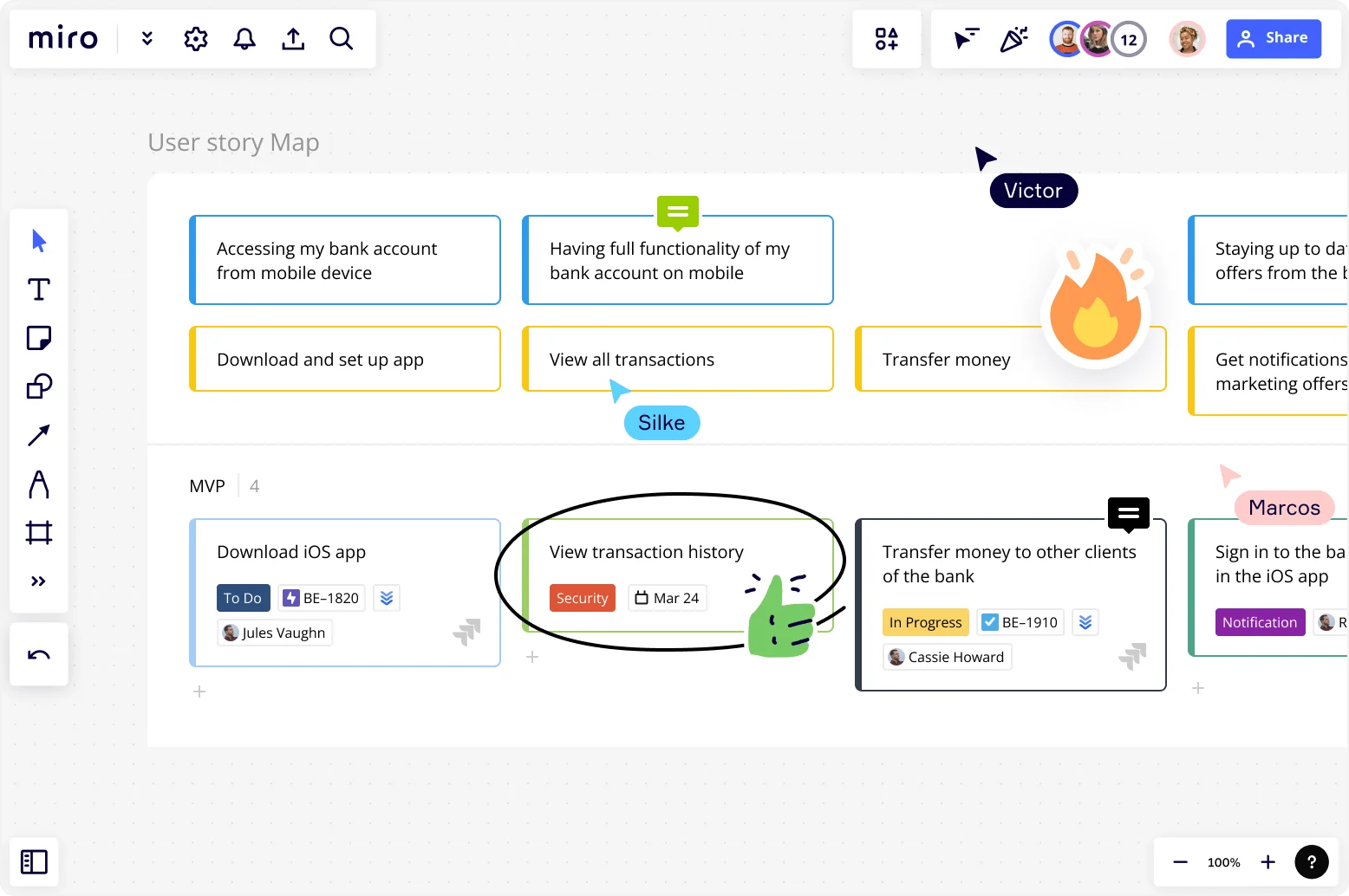
Table of contents
Table of contents
Agile epics — break down larger projects

What is an epic in Agile?
Customer needs are constantly changing. To keep up with your customers’ expectations, you need to know what they're looking for and how to provide it with the most value.
This is where a creating an Agile epic can help.
An Agile epic is a body of work that’s broken down into specific tasks based on the needs of customers or end-users.
The idea is to improve customer value regularly by breaking large projects into smaller pieces. These ‘smaller pieces’ (known as user stories) include brief descriptions of a product or service written from the customer’s perspective.
The entire process helps you organize your work, allows flexibility, and focuses on your customers' needs. It also encourages divergent thinking, meaning teams can brainstorm creative ideas from the customer’s perspective.
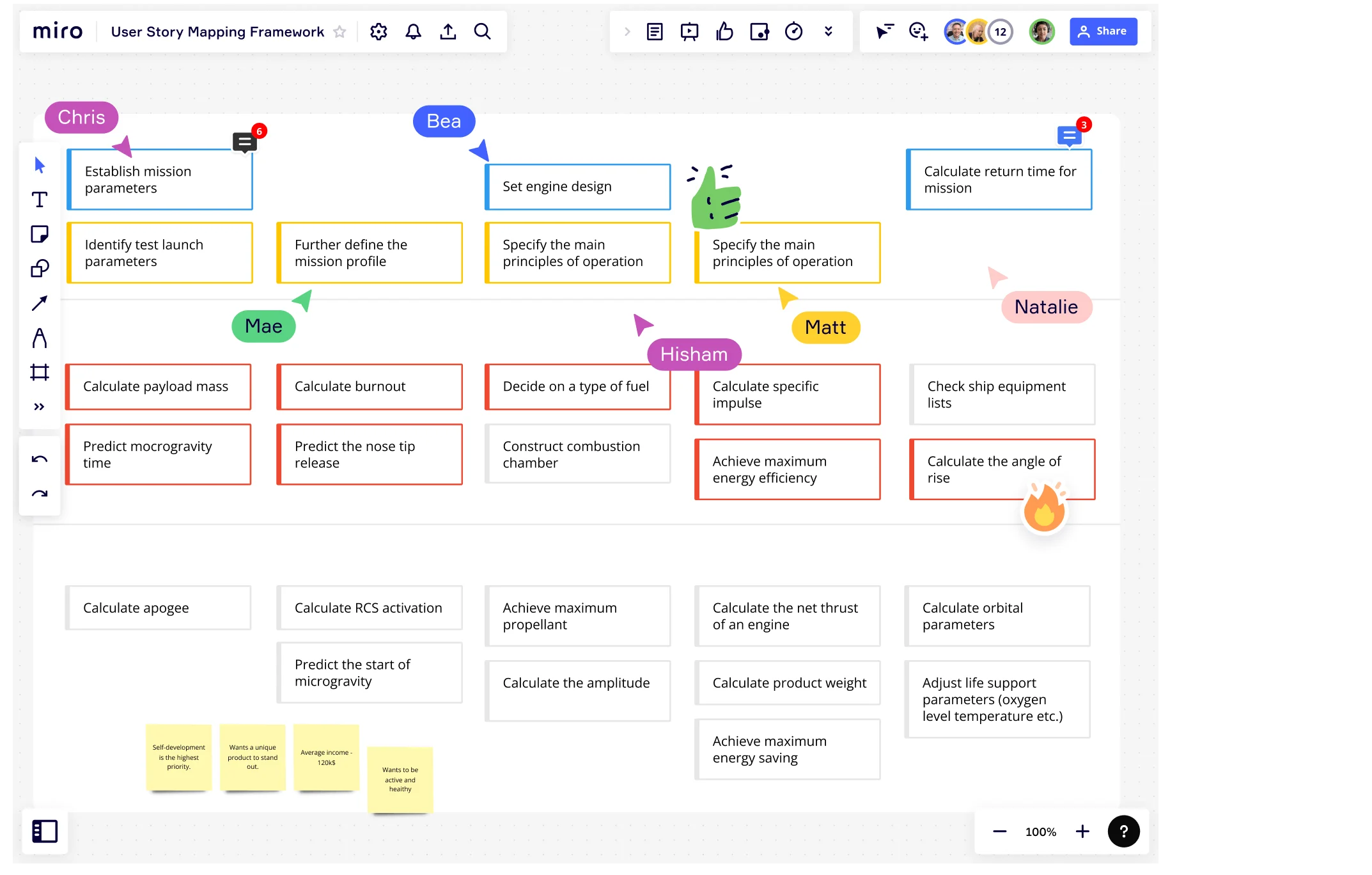
What is the epic hierarchy of work?
The Agile epic process involves creating a hierarchical structure in which epics are top-tier, followed by features, and finally, user stories.
Think of the Agile hierarchy like a book. A single epic is the book, features are the chapters, and user stories are the paragraphs.
The structure of the book makes it easier to understand and move through the story. The paragraphs help you to follow and understand the content of each chapter, and reading each chapter gets you closer to the end of the book.
This format is how epics are helpful for project teams. They establish an order of work, making it easier to manage larger initiatives while better understanding customer needs at the same time. And it helps teams prioritize Agile artifacts based on what the customer wants and what delivers the most customer value.
Agile epic vs. feature: What’s the difference?
With the Agile epic at the top of the hierarchy, the features provide more detail on building a product. A feature is a functionality you deliver to the end user.
For example, a feature could be a search function in your customer dashboard. It allows customers to quickly find the information they need, improving their overall experience and adding value to your product. This feature becomes part of an Agile epic; further detail is in the user stories.
Features don't fit into sprints easily, unlike user stories, which do.
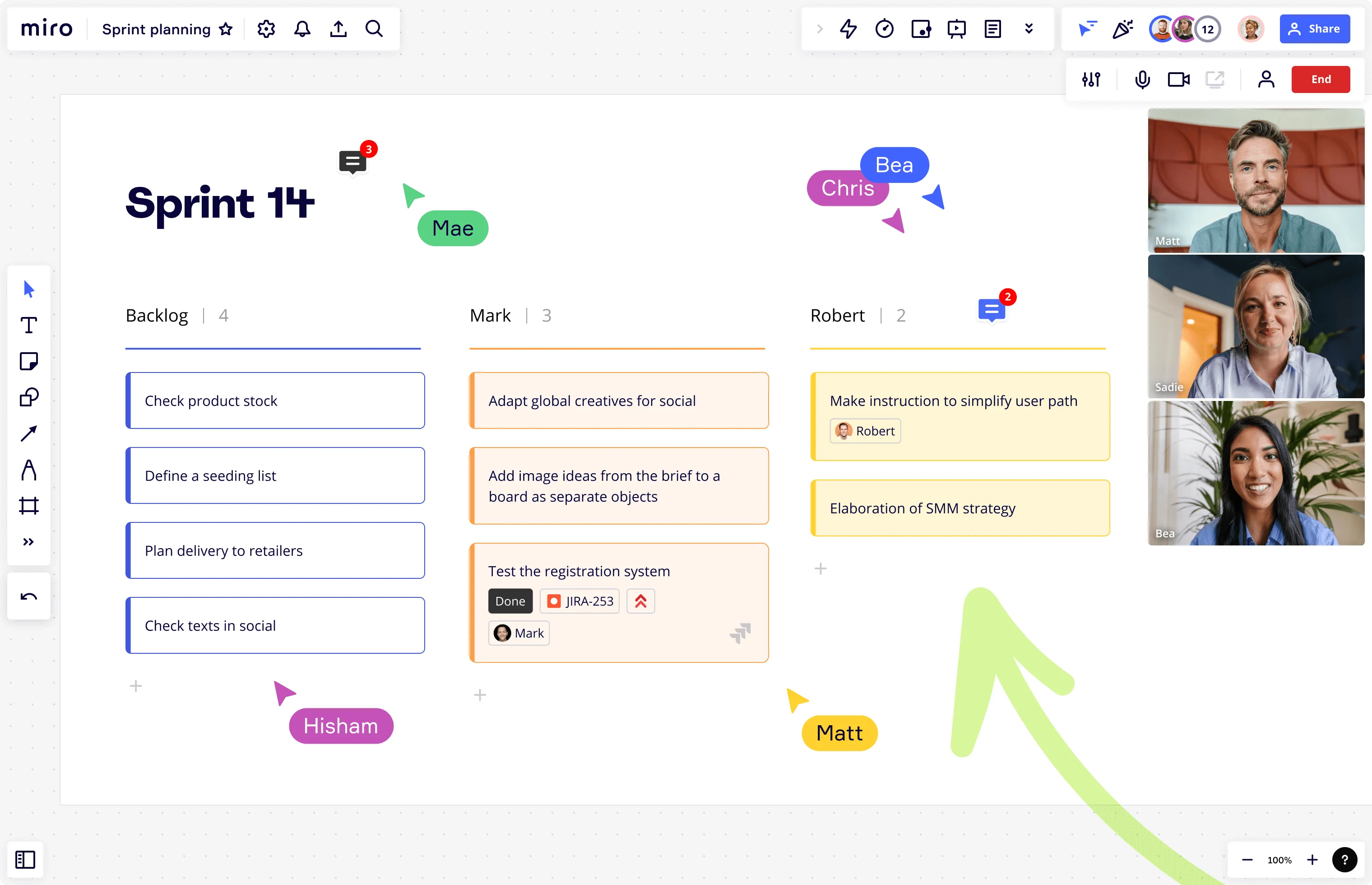
Agile epic vs. story: What’s the difference?
An epic is a collection of features and user stories, meaning they're not the same thing. Here are some of the most notable differences:
An epic is a piece of work that’s too large or complex for a single sprint, while a user story is the description of a feature written from the user’s perspective.
Epics provide a high-level view of the work, while user stories are more detailed and specific.
Epics are prioritized based on their overall business value, whereas user stories are prioritized based on their importance within each epic.
What are the benefits of using Agile epics?
Agile epics contribute to improved project management, stakeholder engagement, team collaboration, and the ability to adapt to changing requirements. Here are a few of the key benefits of using Agile epics:
Flexibility
Agile project management is an iterative process, meaning that is has the flexibility to meet changing customer needs. Teams can revisit user stories, the descriptive pieces of an epic, to prioritize the right tasks at the right time.
Prioritize the customer
Epics put customers at the heart of your work. You look at features and stories from their perspective, making sure you understand what they want and how to meet their needs.
Simplify complex projects
Epics split your work into smaller and more manageable tasks. As a result, you’ll simplify your workload and stop your backlog from becoming overpopulated.
Visibility and transparency
Epics provide a clear and concise summary of a feature or functionality, allowing stakeholders and team members to understand the overall scope and objectives of the work.
Collaboration and alignment
Epics serve as a communication tool, facilitating collaboration and alignment among team members, stakeholders, and customers. They provide a shared understanding of the overall objectives and help create a common language for discussing and planning work.
How to write an epic in Agile
Now that we know what an Agile epic is and how it works, let’s outline the steps you can follow to use an Agile epic in your own project.
Throughout these steps, we'll use mobile app development as an Agile epic example.
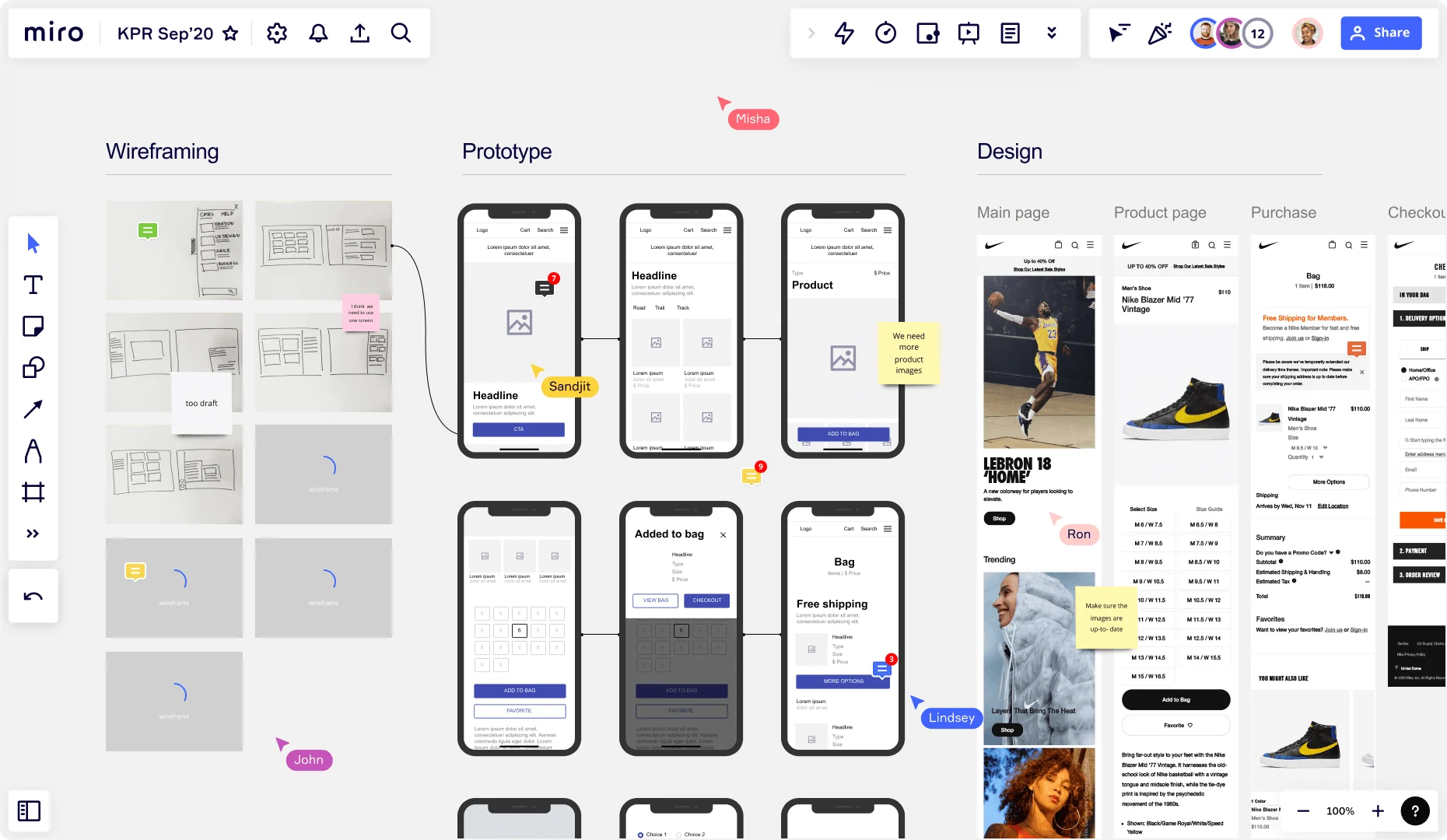
1. Choose a work management platform
Start by finding a platform that allows you to track, manage, and organize your project. With the right platform, you'll find it easier to oversee your Agile workflow — including your Agile epics.
Here are some of the features to look out for when choosing a work management platform:
Easy to make amends to tasks
Agile projects are iterative by nature, which means they’re constantly changing. To keep up with these changes, you need a customizable platform — for example, dragging and dropping tasks or changing due dates within a matter of clicks.
Access to templates
A work management platform with ready-made Agile templates makes jumping straight in and managing your projects easy. You don’t have to worry about creating templates from scratch, which saves you time and effort in the long run. Plus, using a customizable platform, you can change the templates to suit your project perfectly.
Easy to share and collaborate
An Agile team needs to collaborate throughout the project — especially when working through an epic and prioritizing individual user stories. Take Miro as an example. With our digital workspace, Agile teams can collaborate on their projects from anywhere.
2. Name the epic
Before you can start planning the details of the epic, you need to give it a clear, concise title. This step will ensure that your epic aligns with your strategic objectives and gives clarity to the Agile team.
Let’s use an example to demonstrate how it works.
Imagine that an app development team is creating a new mobile app. The app aims to increase customer satisfaction, resulting in higher revenues.
Here’s how the title of this epic might look:
Create a mobile app that improves the customer experience and increases conversions.
This title tells the project team exactly what the epic is trying to achieve (to improve the customer experience) and how it aligns with a business objective (to increase conversions). When it comes to writing user stories, the project team can make sure they align with the goal of the epic.
3. Establish the scope
The scope of your epic outlines what you plan to achieve, why you want to achieve it, and how to determine success. It also puts boundaries in place, which helps your team understand what they need to do to deliver the work as planned.
If we use the mobile app development example again, the scope for this epic might include the following information:
Goals
What you want to achieve from the epic, why it’s important to the business, and how long it should take.
Major deliverables
What the outcome will be for your epic. For app development, the primary deliverable will be designing and launching a successful app.
Acceptance criteria
How you define the success of your epic, such as when certain features are live and working. We’ll look at how to write acceptance criteria in more detail later.
Assumptions
Something that you think is true based on customer feedback. For example, market research might have shown you that users want a search bar in your mobile app.
Limitations
Any barriers that prevent you from delivering the work, such as budget constraints or lack of resources.
Out of scope
To set clear boundaries, you can outline work that sits outside your scope of work. It helps teams focus on work delivering the most value, and keeps track of work that you might want to cover in the future.
For example, you might have specific features you want to include with the app development, but they're not vital in the upcoming epic.
You can fill out a project scope template to create a clear and concise scope for your epic.
4. Define acceptance criteria
Agile epic acceptance criteria outline when a work item is complete and meets the end-user’s requirements. Also known as the ‘definition of done,’ there’s no gray area with acceptance criteria — either the acceptance criteria are met or not.
When writing acceptance criteria, use clear, simple language — similar to what your customer would use to describe their ideal feature and how it works. Doing so makes it easier for you to determine whether the criteria are met.
Here are a few examples of how acceptance criteria might look for mobile app development:
Users can make a purchase on the app
Users can contact us through the app
Users can search for specific products or features on our search bar
The criteria should be about the exact feature, not how to use it. For example, ‘users can make a purchase on the app’ instead of ‘users can easily add items to their basket.’ Following this format, you can ensure you've met your user story by delivering the specific functionality.
If you need help writing your acceptance criteria, use Richard Kasperowski’s User Story Template as a guide.
5. Break the epic down into user stories
At this stage, the epic creation phase is complete. Now, you can split it into separate user stories to add to your product backlog.
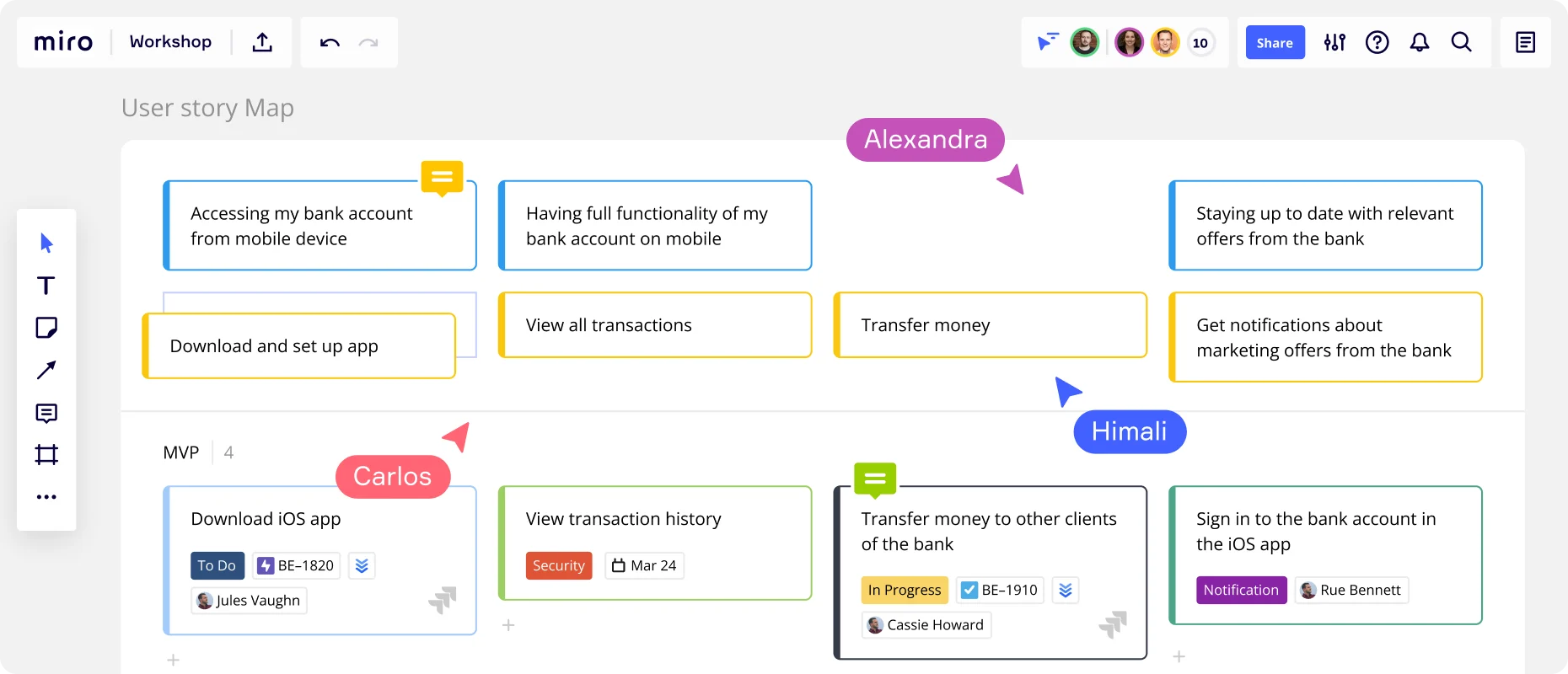
There are various ways to separate the epic into user stories, the most common of which is storytelling.
Storytelling is a tool that helps team members visualize the events of the epic. There are different ways to do this:
Workflow breakdown
Splitting the epic based on the work that has to be done. For example, if developing a mobile app, workflows might include designing a wireframe or streamlining the user experience. The product owner will then prioritize these workflows based on how much value they add to actual customers.
Role-based breakdown
Every epic includes different roles to complete the work. With app development, you’ll need UX designers and software developers. You can use these roles to categorize your user stories and break them down in the epic. For example, software developers will manage any user stories about the functionality of the app.
Outside of storytelling, here are some of the other ways to split an epic:
Data boundaries
Divide the epic into separate bits of functionality based on data boundaries. For example, with a mobile app, you might split it into individual features, such as making a purchase, getting in touch, and uploading information.
Operational boundaries
Reduce the epic to its minimum viable feature, then build it out with additional slices of functionality. With app development, you’ll start by identifying the core functionality that makes the app usable, then build on it with additional features.
Non-functional requirements
Break down the epic into separate user stories that address non-functional requirements, such as performance, scalability, and security. For a new mobile app, you might have different user stories for performance testing, security auditing, and load testing.
Although there are various ways to split an epic, there’s no right way. It all depends on the needs of the customer and the team that you’re working with. Some teams prefer to visualize their entire workflow, while others benefit from outlining data boundaries.
6. Share the epic with the relevant stakeholders
The product owner will share the final epic with the relevant stakeholders, such as clients and investors, to get approval and ensure everyone is on board. Then, they’ll share it with the project team for their review and feedback.
7. Iterate and update the backlog
As the sprints are completed, Agile teams will reflect on what went well and what to improve going forward. During this process, you'll update the backlog items to ensure the user stories remain relevant.
If they’re not, you can move things around or add new user stories that allow you to deliver as much value to your customers as possible.